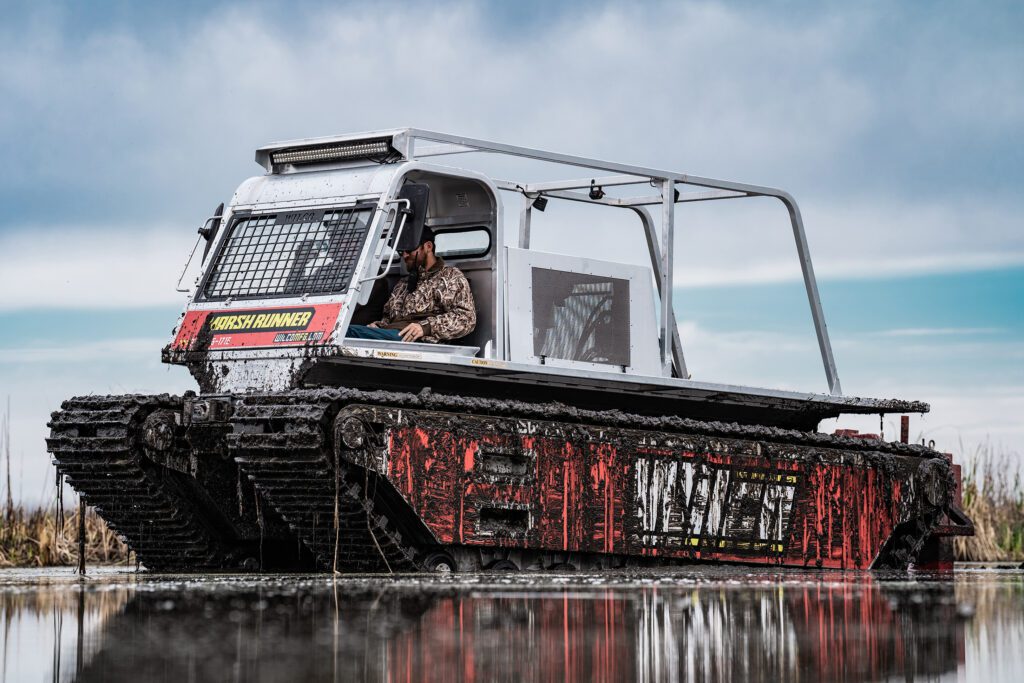When it comes to navigating rough, waterlogged, or marshy terrain, conventional vehicles simply cannot keep up. Marsh runners, however, are uniquely designed to thrive in these challenging environments. With their specialized construction, they offer unmatched mobility and versatility, making them invaluable in industries like oil and gas exploration, environmental research, and construction.
What is a Marsh Runner?
A marsh runner is a heavy-duty vehicle designed to operate in extremely difficult terrain, including marshes, bogs, wetlands, and other waterlogged environments. Unlike regular trucks or all-terrain vehicles, which would sink or struggle in soft ground, marsh runners are equipped with wide tracks or oversized tires that distribute their weight evenly, allowing them to “float” over muddy and waterlogged surfaces.
Key Industries that Use Marsh Runners
Marsh runners are used in a wide range of industries where difficult terrain would otherwise limit accessibility:
- Oil and Gas Exploration: In areas with swampy or marshy terrain, such as river deltas or coastal regions, marsh runners are used to transport equipment and personnel to and from oil drilling sites. Their ability to navigate waterlogged areas without getting stuck makes them essential in these environments.
- Environmental Research: Wetland scientists and environmental researchers often rely on marsh runners to access remote areas for data collection and fieldwork. These vehicles allow them to explore areas that are otherwise difficult to reach, helping with biodiversity surveys, water sampling, and habitat restoration.
- Construction: Marsh runners are also utilized in the construction industry, particularly in areas where infrastructure needs to be built on soft or marshy ground. They are used to transport construction materials and workers, ensuring that projects can continue even in the toughest terrain.
- Emergency Flood Response: In areas prone to flooding, marsh runners are deployed to assist with rescue and relief operations. They can quickly transport essential supplies and personnel across waterlogged areas, ensuring that help reaches those in need.
How to Maintain a Marsh Runner for Optimal Performance
To ensure that your marsh runner operates efficiently and reliably, regular maintenance is crucial. Here are some tips for keeping your vehicle in top condition:
- Inspect the Tracks or Tires Regularly: Over time, the tracks or tires of a marsh runner can wear down due to the harsh environments they operate. Regularly inspect them for signs of damage or excessive wear and replace them as necessary.
- Lubrication: Make sure to keep all moving parts, especially the drivetrain and suspension system, well-lubricated. This will help prevent wear and tear and ensure smooth operation in muddy or wet conditions.
- Check for Water Damage: Since marsh runners frequently operate in waterlogged environments, it’s essential to check for water damage to key components like the engine and electrical systems. Regular cleaning and waterproofing can help extend the lifespan of these components.
- Tire Pressure: Monitor the tire pressure regularly to ensure the vehicle maintains optimal contact with the ground. This helps improve traction and reduces the risk of the vehicle becoming stuck in soft terrain.
Conclusion
Marsh runners are an indispensable tool for industries that need to operate in difficult, waterlogged environments. From oil and gas exploration to environmental research and emergency response, these vehicles offer unmatched mobility and durability in the toughest conditions. By ensuring regular maintenance and proper operation, marsh runners can be a long-lasting solution for accessing remote and challenging locations, helping to keep projects on track, even in the most demanding environments.
FAQs
- What type of terrain can marsh runners handle?
Marsh runners are specifically designed for soft, waterlogged, and marshy terrains, making them ideal for areas like wetlands, bogs, and floodplains. Their wide tracks or oversized tires prevent them from sinking into soft ground, allowing them to move with ease.
- How much weight can a marsh runner carry?
The weight capacity of a marsh runner depends on the model and design. Many marsh runners are built to carry both personnel and heavy equipment, with some models having a capacity of several tons.
- Are marsh runners difficult to maintain?
While marsh runners require regular maintenance, especially due to the harsh environments they operate in, they are generally designed for durability. Regular inspections and cleaning, along with proper lubrication and tire pressure management, can ensure they remain in good working condition.
- Can marsh runners be used in emergencies?
Yes, marsh runners are often used in flood and disaster response situations due to their ability to navigate through waterlogged areas and transport essential supplies and personnel quickly.

